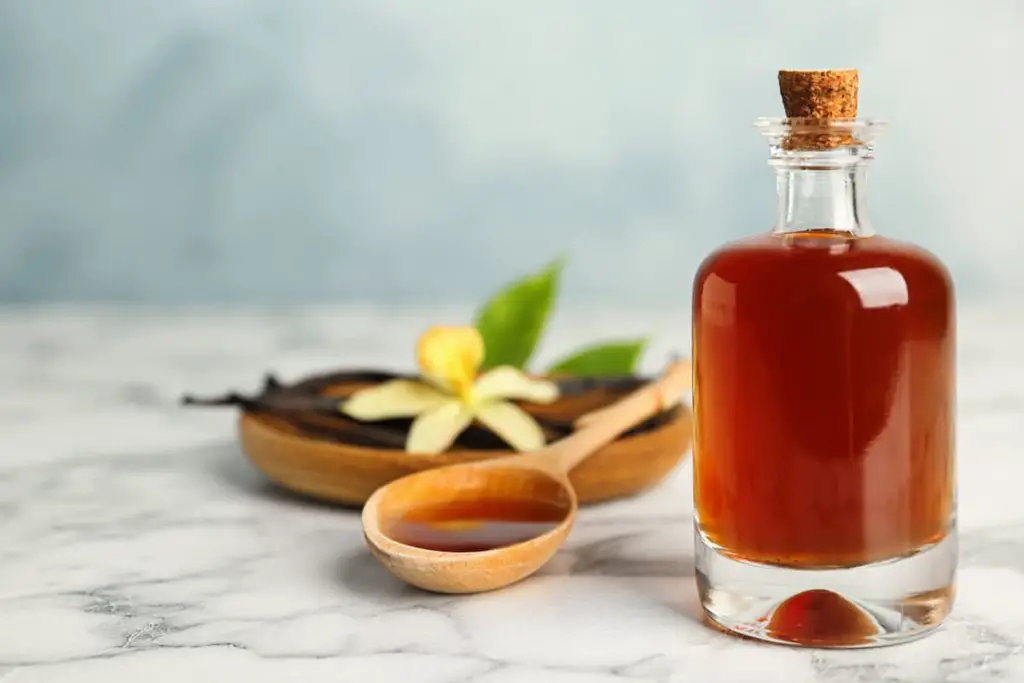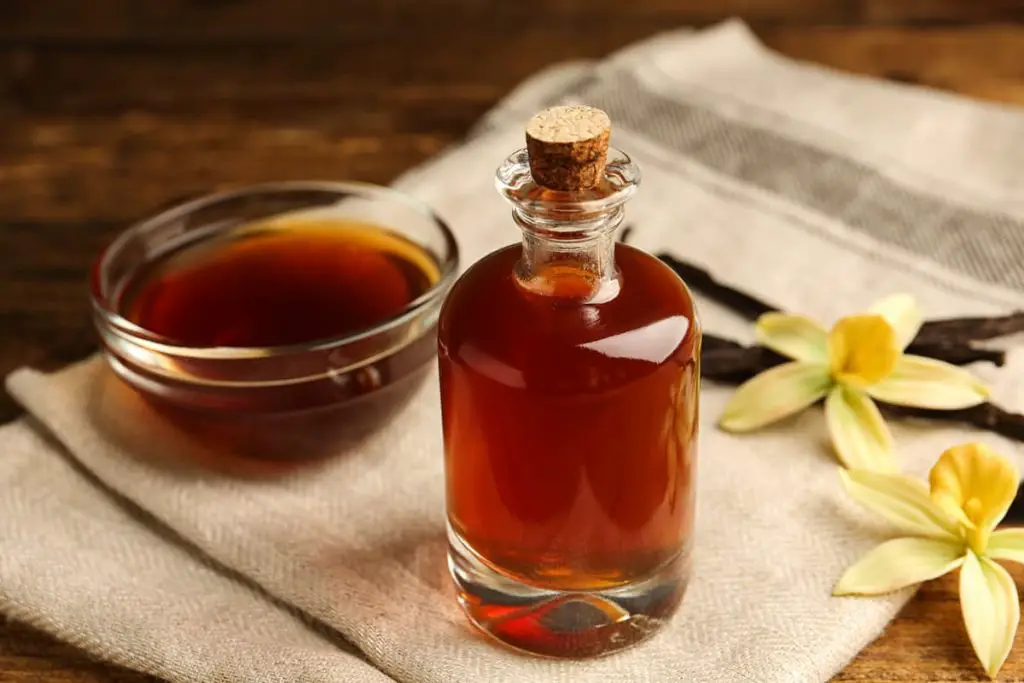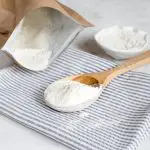How To Freeze Vanilla Beans (+ 4 Better Ways to Store Them)
Vanilla beans are one of the world’s most used flavorings that enhances the taste of many dishes. If you use vanilla beans in your cooking, it is crucial to understand how to store them correctly to stay fresh as long as possible. You might even wonder whether you can freeze your vanilla beans until you’re ready to use them?
You can safely freeze vanilla beans by storing them in a well-labeled airtight container or a vacuum-sealed bag. However, freezing is not the best method since it can dry the beans out. Besides, freezing can result in excess moisture, which can foster mold growth.
In this article, I’ll take you through how to freeze vanilla beans, the pros and cons of doing so, and the four best ways to preserve and store your vanilla beans for a long shelf life. Additionally, I’ll discuss how long vanilla beans can be stored, and how you can tell if they have gone rancid.

How To Freeze Vanilla Beans
If you are willing to give freezing vanilla beans a shot, here is a step-by-step guide.
- Find a freezer bag or vacuum sealer like the NutriChef Vacuum Sealer (available on Amazon.com). This product is available at a relatively low price and is extremely easy to operate.
- Ensure the vanilla beans are tightly sealed. A vacuum sealer is a great option, but you can also use two freezer bags if you make sure that as much air is removed from the bag as possible. Seal the beans tightly into the first freezer bag, then pack the bag with the vanilla beans into the second freezer bag.
- Label the storage date on the containers or bags.
- Place the beans in the freezer and leave them for up to 12 months.
Tip: Once you remove the vanilla beans from the freezer, dry them out on paper towels for 4-5 hours before putting them in a glass jar. Do not refreeze them once they’re in the jar since they can quickly go bad.
Pros of Freezing Vanilla Beans
These are some of the pros of freezing your vanilla beans.
- Smell and aroma protection – The natural taste of vanilla beans is best preserved when you freeze them in the right conditions.
- Prolonging shelf life – While it’s not the most recommended method, freezing can help your vanilla beans last up to 1 year.
- Saving money – Vanilla beans are pretty expensive, and it would be best if you preserved them to savor what you have.
Cons of Freezing Vanilla Beans
Here are some reasons you may reconsider freezing your vanilla beans.
- Requires specific procedures – Freezing beans is a process that requires precision. A mistake made in the freezing process can ruin the vanilla beans altogether.
- Exposing the vanilla beans to mold – Vanilla beans are exposed to moisture if they are not sealed in an airtight fashion. This can lead to the growth of mold and mildew while the beans are in the freezer.
- Higher chances the beans will go rancid – The conditions in a freezer may accelerate the rate at which vanilla beans go bad.
- Needs care once out of the freezer – Once removed from the freezer, vanilla beans have to be paper-towel dried for 4-5 hours to prevent moisture accumulation.
The bottom line is that although vanilla beans can be frozen there are several other storage methods that will give the beans a longer shelf life.
What Are the Best Ways To Store Vanilla Beans?
Vanilla beans are somewhat expensive to buy. As such, you won’t want to risk your vanilla beans starting to mold or losing their aroma and flavor because of incorrect storage. While we’ve learned that freezing vanilla beans is possible, there are several better ways to store them.
The best ways to store vanilla beans are in a glass jar with alcohol, as an extract, or in an airtight storage container at room temperature. These containers should be tightly sealed to prevent moisture from molding the vanilla beans. Store them in a cool, dark, and dry place.
Let’s look at each method of storing vanilla beans.

Alcohol and Refrigeration Preserves Vanilla’s Freshness
Vanilla beans that haven’t been stored properly are susceptible to mold and have a reduced shelf life overall.
Soaking vanilla beans in alcohol and refrigerating is the ideal storage method. You should cut the beans or pods in half crosswise, keep them in a glass full of vodka or rum, and then refrigerate.
Alcohol is well-known for its antimicrobial properties. It keeps viruses and microorganisms at bay in the right concentration. The vodka or rum helps keep them fresh for 6 and 12 months.
Making Vanilla Bean Extract at Home
If you’re concerned that you won’t use all of the beans before they dry up, make a vanilla extract.
Here is a step-by-step procedure for making a homemade vanilla bean extract.
- Slice the beans in half and weigh them 3oz to 6oz beans (85.0 g to170.09 g) for 750ml (26.40 oz) of alcohol.
- Soak the beans in vodka, brandy, or rum for 2 to 3 weeks.
- Check to see if the beans are properly soaked. At times, it’s simply the alcohol that smells like vanilla. You want a strong vanilla smell all throughout the mixture.
- You can scrape the beans and use the seeds in desserts or baking before soaking the empty pods in alcohol. However, the seeds can make a great difference in flavor and aroma.
Here is a YouTube video that has in-depth information on how to make a homemade vanilla extract:
You can also buy vanilla extract without artificial flavors and colors like Watkins All Natural Original Gourmet Baking Vanilla from Amazon.com. The extract has a limitless shelf life and comes at a reasonable price.
Using a Glass Jar Preserves Vanilla Beans for Years
You can also store vanilla beans in a clean, dry, and airtight glass jar. The jar should be well-labeled and kept in a cool, dry, and dark place like your pantry or cabinet corners.
You can preserve vanilla beans this way for up to 2 years.
Ideally, the best temperature range to store the beans is 15ºC to 25 ºC (59ºF – 77ºF). That is room temperature. It’s also best to keep them away from direct heat because they may sweat easily.
Store Vanilla Beans in Airtight Bags
When you get vanilla beans from the store, they come in an airtight bag, but they will dry out easily once you open them.
Once you open the original packaging, wrap them in wax paper and store them in an airtight bag. Make sure to remove as much air as possible.
Note: Don’t forget to frequently aerate vanilla beans if you are using glass jars and airtight bags as storage methods.
- After every 8 weeks (during winter) and 4 to 6 weeks (in summer), remove the beans from their airtight containers. Aerate for approximately 15 minutes to prevent moisture accumulation in the storage containers.
- The beans shouldn’t come into contact with direct sunlight. After 15 minutes, make sure to rewrap them into their safe storage container and put them back in a cool and dry place.
- Remember to open the beans storage container only when necessary. It will make sure they stay fresh for as long as possible.
You can find additional tips on storing vanilla beans in this YouTube video:
How Long Do Vanilla Beans Last?
Vanilla beans are an expensive and tantalizing commodity to have in your kitchen. However, you may not need them often.
So, you should understand when to use them before they go to waste.
Vanilla beans can last from six months to 2 years. However, the vanilla beans’ shelf life and quality are determined by when they were harvested and the storage method. When a vanilla bean is cut while yellow at the tip (completely ripe), it keeps its flavor for years.
You should not immediately discard vanilla beans if they go past the 6 months to 2-year mark. You will want to check to see if they’re still good for use.

How To Know if Vanilla Beans Have Gone Bad
If the vanilla beans go bad, they can easily spoil your food’s flavor.
You can tell if vanilla beans have gone bad if they no longer have their sweet aroma, the pulp dries and becomes brittle, or they show signs of growing mold. Even so, dry vanilla beans are not harmful to your health like moldy pods would be.
Here are the common signs to look out for that can help you tell if vanilla beans have gone bad.
- Aroma – If your vanilla beans go bad, they lose their fragrance and taste. You will often sense a sour odor in old beans.
- Mold – You may also find that sediments of the vanilla beans get a cloudy appearance and a musty feel (growing mold). However, do not mistake “frosty vanilla crystals” for mold as it forms when vanillin starts to move to the pod’s surface while the beans dry.
- Texture – Once the pulp dries up, it becomes brittle, and the beans are no longer suitable for use.
Conclusion
Vanilla beans can be frozen safely. However, there is an array of alternative storage methods for vanilla beans that you can choose based on your individual needs.
If possible, avoid freezing the beans. Also, if vanilla beans are not an ingredient that you regularly use, only purchase the amount you need. It will save you the hassle that often accompanies storage and preservation.


